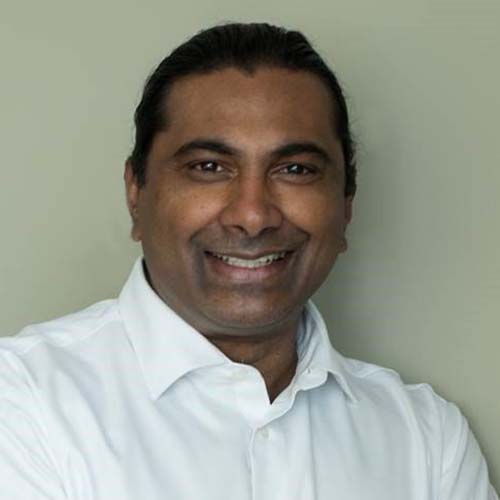“During my twenty years of working in the healthcare innovation field, creating an institute and program such as this has always been an aspirational goal of mine,” said Rubin Pillay, M.D., Ph.D., executive director of the Marnix E. Heersink Institute of Biomedical Innovation, assistant dean for Global Health Innovation, and chief innovation officer, UAB Health System. “Thanks to the Heersink gift, this has now come to fruition.”
The Marnix E. Heersink Institute for Biomedical Innovation, established by the Heersink gift, aims to foster and facilitate health care improvement and socio-economic transformation through creativity, innovation, and entrepreneurship.

A need for innovation in healthcare
Pillay shared that the healthcare system is ailing and in need of help, calling for improved cost, quality and access, and productivity in this sector.
“Yes, medical treatment has made astonishing advances over the years, but the packaging and delivery of that treatment are often inefficient, ineffective, and not consumer-friendly,” said Pillay. “The well-known problems range from medical errors, which by some accounts are the eighth leading cause of death in the United States, to the soaring cost of healthcare.”
The amount spent on healthcare now represents about one-fifth of the U.S. gross domestic product. It continues to grow much faster than the economy and threatens the economic future of the governments, businesses, and individuals called upon to foot the bill.
“Despite the outlay, more than 40 million people have no health insurance,” said Pillay. “Such problems beg for innovative solutions involving every aspect of healthcare—its delivery to consumers, its technology, and its business models.”
Mission and intitiatives
The Marnix E. Heersink Institute of Biomedical Innovation has been established to combat these gaps in healthcare through education, research, and applied activities.
“Despite an enormous investment in innovation and the magnitude of the opportunity for innovators to both do good and do well, all too many efforts fail, losing billions of investor dollars along the way,” said Pillay. “This is the key opportunity for innovation education and training.”
The institute seeks to create a culture of innovation in healthcare and ensure that healthcare organizations have a critical mass of individuals in their organizations who understand the innovation imperative and process.
“By definition, innovation is an applied activity, and this will be reflected in our approach.,” said Pillay. “We are primarily a capacity building institute so our research and practice will also reflect and help us better understand competencies, pedagogy, and organization that best foster and facilitate innovation in healthcare settings.”
“We are excited to collaborate with the new institute,” said Melissa Mancini, UAB Health System’s Associate VP, Strategy and Business Development. “Innovation is a cornerstone of our strategic plan and can create tremendous value when applied initiatives are closely aligned with our strategic objectives.”
The institute is anchored by several internal and external partnerships, including the Bill L. Harbert Institute for Innovation and Entrepreneurship, School of Health Professions, School of Engineering, and the Collat School of Business. Faculty from these departments will be teaching the institute’s programs, and the Heersink Faculty Fellows program provides an opportunity for faculty from any school or department to work with the institute.
Anticipated impact
“The institute will bring together complementary skill sets to enhance the transformative power of teaching and learning in biomedical innovation, and accelerate high-value, innovative solutions through the continuum of discovery, translation, and application, in partnership with the clinical practice and other local and international partners,” said Pillay.
The central goal is to create a world-class, comprehensive innovation and entrepreneurship program in the Heersink School of Medicine. In attaining this goal, the program will operate from an innovation and entrepreneurship mindset. This includes the belief that entrepreneurship should play a significant role in state, national, and global economic development and the elimination of poverty, which is the root cause of many of the health-related challenges we experience today.
“Our programming should be of the highest quality, offered in a culture that is both supportive and achievement-oriented,” said Pillay. “Its education will be both academic and practical, as well as interdisciplinary, with significant learning occurring outside the classroom.”
Learn more about the Marnix E. Heersink Institute for Biomedical Innovation.